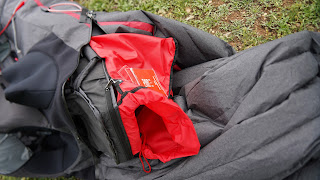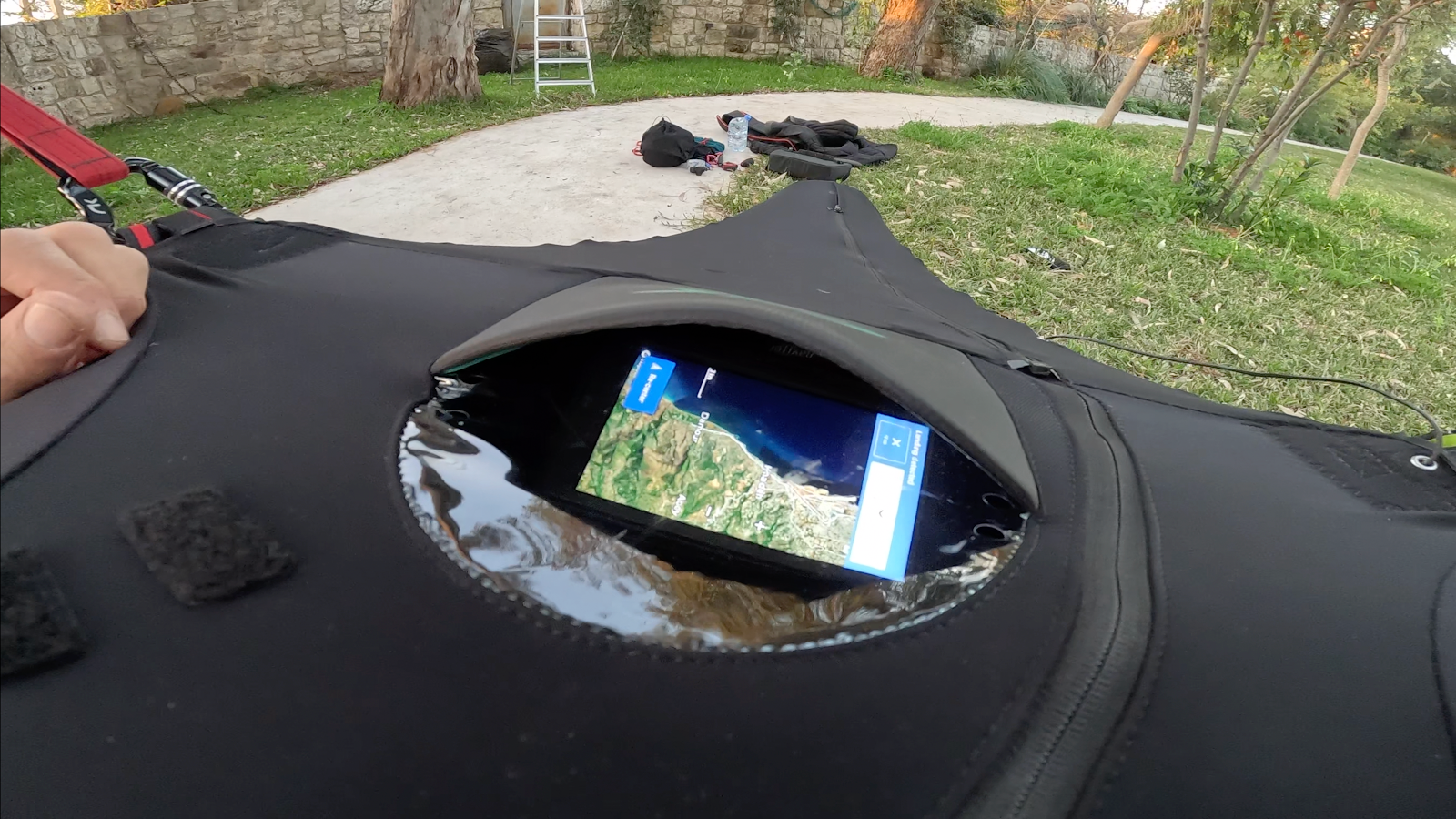And finally, it was released, and I received the latest full-on competition harness from Niviuk. The Drifter 2.
The first contact with the harness showed me ‘impeccable’ construction details! I have flown and seen many harnesses in the past, and I can firmly confirm that the finishing details on Drifter 2 are excellent! matching the top-end brands out there. You know me very well from my writing when I'm excited about a product! The feeling is similar to discovering the latest 2024 F1 cars…RB20…SF-24...W15… etc…
I’m a fan of good quality products! And this Drifter 2 built quality is the top you can find. (Pls see attached a few ‘close-up pictures’)
This era of paragliding performance has slightly shifted momentarily more toward aerodynamic harnesses. The appearance of the Ozone Submarine, and later the Gin Race 5 paved the path for that direction.
I already test-flew the Submarine, which has an inflatable outside shell and is considered to provide less drag resulting in more gliding performance.
Niviuk has adopted a different approach but in the same direction. Like the excellent Genie Race 4, which offered a sleek performance pod, but an open harness on the chest area, the Niviuk Drifter 2 is a conventional but ‘hybrid’ harness that has the best of both worlds.
Hybrid harness explanation:
A zipper that runs from your feet directly to the cockpit, and another with the same and continuous direction toward your neck providing a straight streamlined shape like the one on the Submarine. The difference is that the pod remains a conventional neoprene pod ( not inflatable)
The DRIFTER 2 is equipped with two cockpits. A small one that lets your instruments/power bank appear through the plastic window. Another lower bigger compartment ( see pic) for your ballast, instruments..etc…
This cockpit is big enough for a + 10 L of water ballast.
Installing a regular vario with an E-Ink Screen without a backlight is difficult to see. Anything with a light background like phone apps, or Oudie N, etc…is very clear, just because under the sunlight the shade produced by the outer shell, over the cockpit prevents any light in, you only see very clearly in plain sunlight, the lighted instruments inside.
Inserting my hands makes it very easy to adjust the instruments. The neck collar of the neoprene is quite large with no pressure on the neck.
Taking off while ready is easy in the upright position without any neck pressure point. Getting inside the pod is a non-event, and of course, pulling the zipper closes and opens the pod rapidly.
I never encountered a problem with the zipper so far. When landing your foot can alone open the zipper with probably a slight pull of 10 cm on the zipper rope.
Kiting while standing up with the DRIFTER 2 is surprisingly very straightforward without any pressure on your back neck. It feels like a normal harness! Taking off is smooth, and getting into the pod is very quick. When you are ready, pulling a bit on the right zipper line closes the pod.
There are no outside pockets left and right, probably for lesser drag. But it would be nice to have one at least, just because everything is sealed and you have to open the pod to access the lower compartment. Probably installing a smaller outside pocket would be nice.
In the air, inserting your hands to adjust the Vario, or phone easily.
Now for the seating position/comfort/weightshifting.
Before adjusting your harness, please install the two rescues, drinking water, and the stuff you put in the moderate-width rear compartment when you are flying just because you need to reset your center of gravity while adjusting it to achieve a flawless and efficient line when gliding.
The foot pad holds an extension to be removed on taste and body size, of 5 cm thickness with 4 pcs ( see pic). For my height of 1.81 cm, I removed all the foot pads and reached a perfect sitting position without any pressure from the neoprene that covered my shoulders. When pulling the left and right upper side straps which are easy to use even in flying, for adjusting your back inclination, and to stay streamlined with the air without
positioning the rear fairing higher to reach that ultimate position, your sitting will be slightly reclined. On the Arrow L, the max layback position is still 3-4 cm forward than on the Drifter 2 perfectly streamlined position.
It is very logical for a high-end competition harness to give you that reclined position if the pilot is aiming for less drag. Of course, a ‘slighter' upright position would be most welcomed.
The reclined seating position is quite comfortable for the body. There are no pressure points whatsoever! Comfortable to sit in. It is exactly like laying down on your favorite sofa in winter time, watching ‘dustoftheuniverse channel’ ;-) but the tea holder is missing!
The legs are surely naturally supported. The seat plate of the DRIFTER 2 M however is a bit large for my size of 75 kg.
A gap of 3 cm on each side.
The seat plate of the Arrow Large is one centimeter less from each side than the seat plate of the Drifter 2 M size. I tried to install a smaller plate, or even without a seat board which Niviuk doesn’t recommend, but as the DRIFTER 2 is constructed like an F1 car, I couldn’t sink in, because there’s also the ballast pocket underneath the seat which is also reinforced to be stiff when holding the water ballast. Everything is surgically designed! :-)
There are two positions left and right for the anti-G which are easily reachable in the air.
The DRIFTER 2 has little adjustment straps and it is really easy to adjust. The roll movements under the DRIFTER 2 with the main strap at 50 cm are quite comfortable. It is very close to the Arrow L roll movements. The weight shift is well coordinated and after flying the Arrow L, I didn’t quite find any big differences in roll and weight shift besides my reclined position. Overall it is quite a balanced harness to fly with high-end gliders. Stable enough to be comfortable on long flying hours.
Pushing on the speed bar is another nice experience. The big aluminum pulleys hold a stop system, and help you maintain the pressure while holding the speed bar for a time. On the Arrow, for example, my feet always have more pressure during long glides. The pulleys on the DRIFTER 2 have a stop-back spinning system that allows less foot pressure while stepping on the speed bar.
Asymmetric speed bar steps are installed for a smoother and more balanced pull between the left and right risers. Like I said, I felt like driving an F1 car. :-)
Even in a reclined position, the pressure when pulling on the speed bar doesn’t put pressure on your shoulders. The pressure is homogeneously distributed on your back. It was smooth to keep the speed bar.
The back fairing doesn't flutter at all and stays in pressure with a very narrow shape.
The DRIFTER 2 has a new 5.5 cm origami back protection https://niviuk.com/en/orikami. It is the first small protection after the Koroid that acts differently as Niviuk stated. It is indeed a small protection, and I would personally prefer having a larger one…But maybe I’m still old-fashioned and not used to this new technology… I just really hope that its efficiency surpasses the claims.
Conclusion:
The DRIFTER 2 is for sure a very beautiful-looking competition harness equipped to the last detail. Pilots' eyes on take-off and landing were wide open and commented frequently about that beautiful shape. Comfortable for the back and also in roll movements. The construction is excellent! felt very robust and with those materials it could last very long!
When flying it, a ‘psychological’ feeling of performance will be on the menu.
The air over my face was less perceived than usual as my head was near the outer shell.
Landing and getting outside the pod is quite easy and feels exactly like a normal pod.
For XC and competition pilots, the race is on… :-)











































